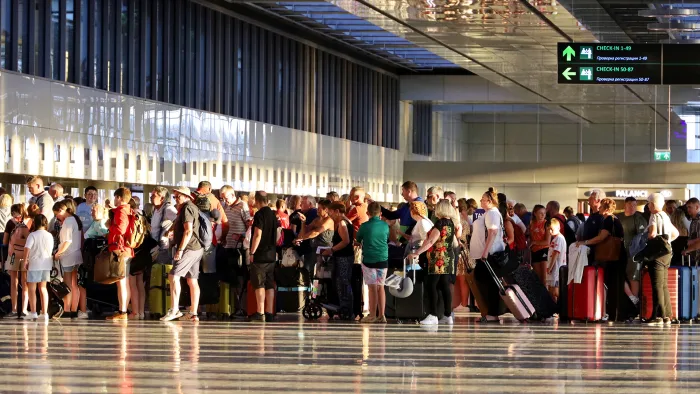Major airline learns its Chapter 11 bankruptcy fate
The COVID-19 pandemic dealt a series of devastating blows to the airline industry. Initially, air travel ground to a halt for over a year, with international routes being particularly hard hit. Airlines faced a drastic reduction in passengers, leading to a situation where expenses continued to accumulate while revenue plummeted. Despite minimal flying, airlines had to pay their employees and maintain their fleets, which resulted in a significant increase in debt at high interest rates as they deferred expenses.
The Shift in Travel Dynamics
As the pandemic began to recede, the landscape of travel changed significantly. Many individuals and businesses reevaluated the necessity of in-person travel, leading to a decline in business trips and a slower recovery of international routes. Business travelers, who often purchase higher-priced seats in Business or First Class, were notably absent, depriving airlines of crucial revenue needed during their financial recovery.
Increased reliance on virtual meetings and a reduction in corporate events further contributed to the financial strain on airlines. This shift has had varying impacts across the industry, ultimately pushing one prominent airline into bankruptcy.
SAS Airlines’ Chapter 11 Bankruptcy Filing
While many Americans may not be familiar with Scandinavian Airlines (SAS), it is a significant player in global aviation. The airline emphasizes its importance within Scandinavian infrastructure, boasting high-frequency departures to and from the region and connecting smaller airports to major hubs as part of the Star Alliance, which includes access to 1,300 destinations worldwide.
SAS filed for Chapter 11 bankruptcy in July 2022, a legal process that allows companies to restructure under the supervision of the U.S. federal court system. This strategy has been successfully utilized by various international airlines to reduce costs and navigate financial difficulties.
Despite the bankruptcy filing, SAS has assured passengers that its operations and flight schedules would remain unaffected. The airline emphasized that it had secured adequate liquidity to support its business during this transitional phase, including obtaining $700 million in Debtor-in-Possession (DIP) financing to bolster operations throughout the restructuring process.
Approval of SAS’ Restructuring Plan
Recently, SAS received a pivotal approval from U.S. Bankruptcy Judge Michael Wiles of the New York Bankruptcy Court to move forward with a restructuring plan that will provide $1.2 billion in new funding, involving a consortium that includes the Danish government.
This group of investors comprises Castlelake, L.P., Air France-KLM S.A., and Lind Invest ApS, along with the Danish state. As part of this plan, junior creditors will receive a combination of credit and equity, totaling $350 million. However, SAS has not disclosed the extent of its original debt that remains unpaid.
CEO Anko van der Werff stated, “The investment agreement that was approved by the court today is a key milestone in our SAS Forward plan, demonstrating that our new investors believe in SAS and our potential to remain a leading force in the airline industry for years to come.” However, it’s important to note that this restructuring will result in the cancellation of SAS equity, with no payments being made to existing shareholders.
Also Read: Early Voting in Ohio: Key Dates for the 2024 Election






